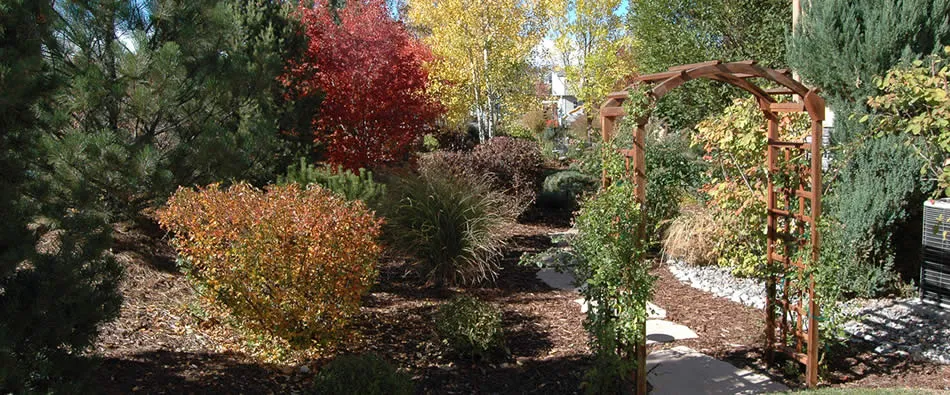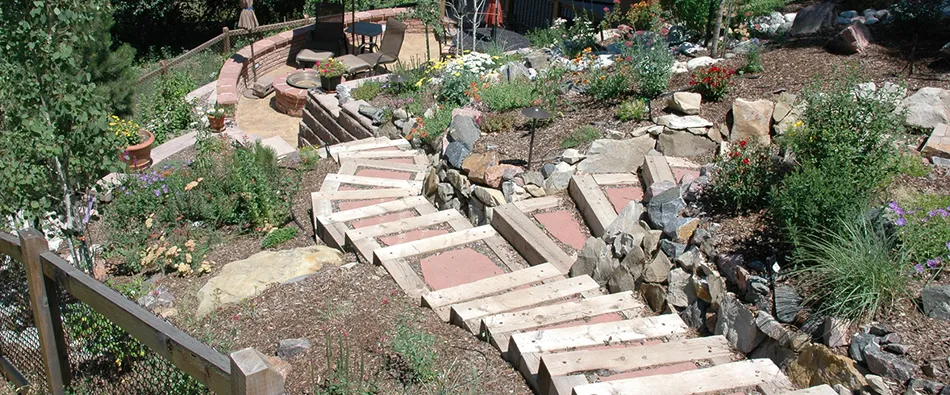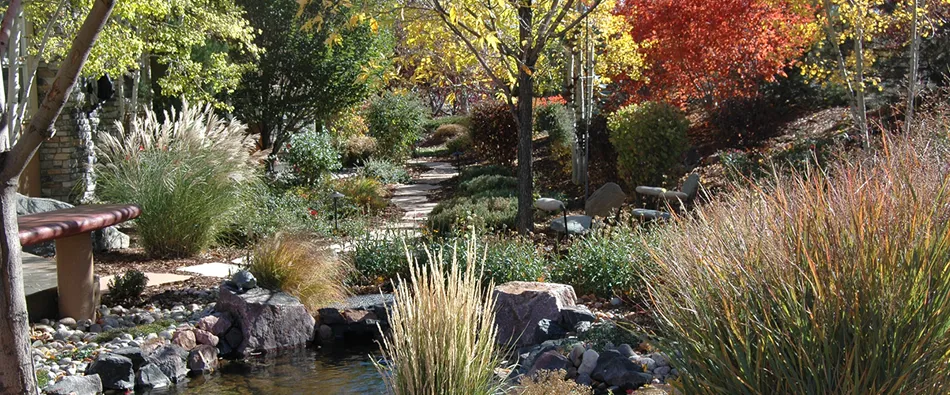Fall & Winter Watering
In much of Colorado, winters can have extended warm, dry, windy spells. Warm winters without snow appeal to people, but cause winter drought. Trees and shrubs at risk from dry winters include recent transplants, evergreens and shallow rooted species such as lindens, birches, and Norway and silver maples.
Soil needleWater plants when the leaves start to fall in the autumn to send them into winter with adequate soil moisture. For recent transplants, a soil needle can be used on low water pressure for one minute at each site to water the root ball and surrounding soil. Make injections in a grid pattern one foot apart and nine to 18 inches deep, using caution not to go below the absorbing roots.
Frog-eye type lawn sprinklers can be used to water established trees and shrubs. The most important area to water is from the edge of the branches halfway to the trunk, and the area two to three times that distance out from the edge of the branches. Allow sprinklers to run 30 minutes at each setting.
Root needle
Monitor weather and soil conditions from November through March. Generally, if four weeks elapse without snow cover, water plants and trees again during these months when temperatures are above freezing and the soil is not frozen. Water plants early in the day so the water can soak into the ground before freezing nighttime temperatures.
Remember to disconnect and drain hoses after use. Don't activate sprinkler systems during the winter.
---------------------------------------------------------------
Xeriscape Mulches
In the high plains grasslands, dead grass and plants accumulate. These plant remains are natural mulches and are a great benefit for growing plants. They keep the soil moist and loose (increasing the soil’s ability to retain moisture), permit air and water to pass freely to plant roots, and reduce soil erosion and weeds.
Xeriscape mulches
Following Mother Nature’s example will provide those same benefits in a yard. A layer of mulch when xeriscaping keeps soil cooler and reduces evaporation so less water is needed. Mulches can also reduce weeds and can add color and texture to a landscape.
There are basically two kinds of mulches—organic and inorganic. In Colorado the most common organic mulches include wood chips, chunk bark, shredded bar, pine needles, lawn clippings and straw. Organic mulches gradually break down and add nutrients to the soil. They will need to be renewed periodically. Decomposition of fresh wood mulches can create nitrogen deficiencies. Be prepared to supplement the area with a fertilizer.
Inorganic mulches are stone-based and include rock, cobblestone, pea gravel, lava rock and crushed rock. They last longer than organic mulches and give landscapes a more formal look. Apply about 3” of mulch for weed control. Use less directly around the plants to allow water to reach the root area. Inorganic mulches also store and radiate heat, so avoid putting large areas of unshaded rock next to a house.
Installing sheet plastic underneath mulches is not a good idea. Air and moisture don’t permeate plastic, so plant roots don’t develop, but weeds can come through the plastic. Instead, use an air- and water- permeable landscape fabric under the mulch if an additional weed barrier is needed.
By using mulch, you’ll have a beautiful yard and save water, too.
-------------------------------------------------------------------
Autumn Gold Landscapes, Denver, Colorado






